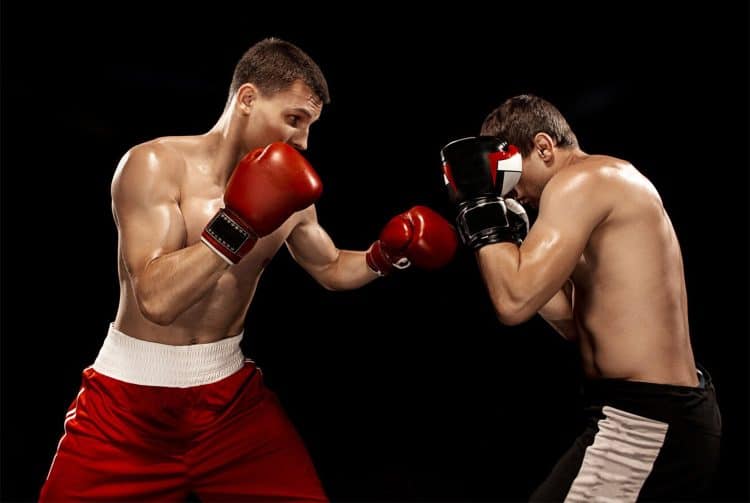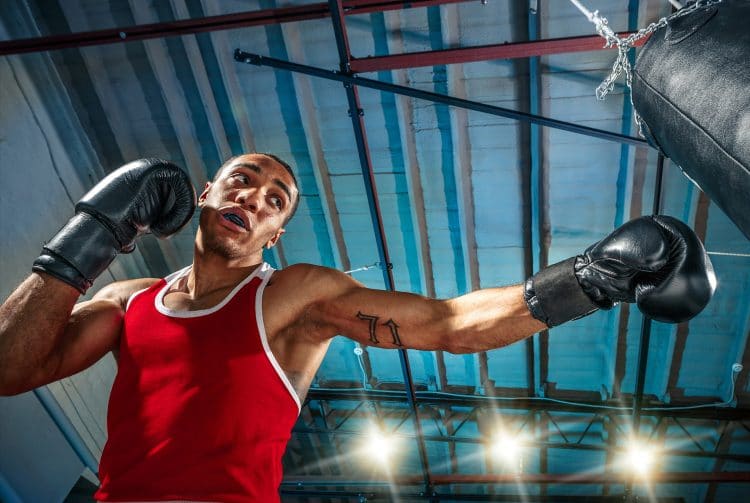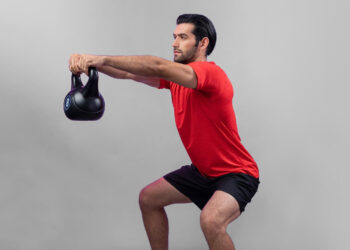How many calories does boxing burn?
Boxing can burn 410 – 1000 calories per hour. The exact caloric burn from boxing depends on the intensity, whether sparring or bag training. Essentially, boxing is a top-calorie-burning exercise.
How to Use Boxing Calculator
To calculate the calories burned boxing you must input your weight and time spent doing the specific fitness activity in hours or minutes. After that, you can select the specific fitness activity you spent time doing and find the calories you would have burned there.
This is how you do that step-by-step:
- Choose your unit of measurement – metric (kilograms) or imperial (pounds)
- Enter your weight
- Select the specific boxing activity and add the number of minutes you spent rowing
- Hit Calculate
You will now see the approximate calories burned boxing.
How The Calculator Works
MET (metabolic equivalent) values are used to calculate the calories burned. This value is used to rate the calorie expenditure of various physical activities and is in the MET formula for calorie calculation. This formula does not factor in things like sex, age, muscle mass, or previous ability.
MET
A MET value rates the calories expenditure of a physical activity and is the ratio between your resting metabolic rate to your active metabolic rate.
Level Up Your Fitness: Join our 💪 strong community in Fitness Volt Newsletter. Get daily inspiration, expert-backed workouts, nutrition tips, the latest in strength sports, and the support you need to reach your goals. Subscribe for free!
Your resting metabolic rate (RMR) measures the calories burned at rest and when you are not actively digesting food. This is the same thing as your basal metabolic rate (BMR). Your active metabolic rate (AMR) measures the calories burned when you are active throughout the day. This has a lot of factors added in because we do a lot of things throughout our day, but we can get a general number for our AMR through an online calculator.
A physical activity with a MET of 1 will burn the same amount of calories as your BMR. A physical activity with a MET of 5 will burn 5 times as many calories as a physical activity with a MET of 1, and 5 times as many calories as your BMR.
Formula
Total Calories burned in 1 minute = (3.5 x MET x body weight in kg)/200
Examples
A person weighing 140-pounds will burn 855 calories per hour boxing in general.
- Calories burned (per minute) = (body weight in kg x MET x 3.5) / 200
The formula to calculate how many calories a 140-pound person will burn will look like this.
- 63.5029kg x 12.8 x 3.5)/200 = 14.2246496 Calories burned per minute
To find how many calories you will burn in one hour of boxing, you must multiply the calories burned per minute by 60 minutes.
- Calories per hour burned = 14.2246496 x 60 = 855
Results
So, 855 calories are burned per hour boxing in general for a 140-pound person. A 140-pound person will also burn 12.2 calories per minute boxing.
What is Boxing?
Boxing is a combat sport done professionally, or for self-defense reasons. It consists of two people wearing protective gloves, along with mouth guards and hand wraps to protect their hands, fighting each other in a boxing ring.
The boxing ring is an iconic stage where boxers fight until one person is knocked out, one person gets too disoriented or beat up to fight, or the time runs out or an injury that could damage someone beyond repair happens.
Western boxing has certain rules that differentiate it from other types of boxing such as Chinese boxing (kung fu), Thai boxing (Muay Thai), or kickboxing.
A boxing match usually has 9-12, 3-minute rounds. During these rounds, the fighters use only their fists and nothing else to fight and attempt to knock out the opponent.
If no opponent gets knocked out, then the fighters will have to fight until the time runs out, and the person with the most points assigned to them wins. It can also end in a draw, which happens more frequently than you think.
Boxing is done by using techniques such as slipping, guarding using the forearms, and having great footwork to maneuver around the ring efficiently and to increase the power behind punches.
Level Up Your Fitness: Join our 💪 strong community in Fitness Volt Newsletter. Get daily inspiration, expert-backed workouts, nutrition tips, the latest in strength sports, and the support you need to reach your goals. Subscribe for free!
Boxing requires extreme athleticism, especially great cardio, and speed. This is attained with harsh endurance training and sparring. Sparring is when you train with someone else in a fight, but with the intention of practicing and not beating the other person up.
Sparring will help you learn to take hits and do combos in real-time, rather than on a heavy bag. A heavy bag is useful for training power and for training when you do not have a sparring partner at the moment.
Does boxing burn calories?
Boxing burns many calories. Boxing can burn up to 400 calories when hitting a punching bag or speed bag, and boxing in the ring during a professional fight could burn up to 1000 calories.
These are a lot of calories, but boxing is a very spontaneous sport because each punch or dodge you throw will be different each time, and each opponent will use a different amount of energy.
This is why you shouldn’t rely on boxing as your cardio unless you do it for long periods of time consistently. Other than fights, most of the time you are boxing you will be training.
When training, you will most likely be hitting a heavy bag or speed bag, shadow boxing, sparring, or doing exercise and using weights or workouts that train the core and cardiovascular system.
All boxing exercises will use an extraordinary amount of endurance and be great for cardiovascular health. So, if you want to burn a lot of calories with something you are passionate about, boxing is great for that.
Does boxing build muscle?
Boxing is not the best for building muscle, but it can be great for losing belly fat and preventing diseases like heart disease and diabetes since it raises your maximum heart rate and is great at burning calories.
Boxing consists of small quick bursts of movement that would result in an increase in speed and endurance but not hypertrophy. It would not result in a lot of muscle being built unless weight lifting is supplemented.
What can I do to gain muscle along with boxing?
An exercise program would have to accompany the technique learned in your boxing class.
Once you join a boxing gym, you will start to get a sign that you need to become stronger and gain more endurance outside of your training, so this is where a weightlifting and cardio routine will come in.
Your best bet is to have a mix of exercises for all purposes. If weight loss is the goal, then cardio needs to be prioritized. If you need to work on technique, then it needs to be prioritized over strength training.
And if you have your technique down but you can’t seem to throw a punch hard enough or you can’t do simple everyday things in life without struggling, then you should prioritize strength training.
All martial arts require that you build up cardiovascular strength, muscular strength for the entire body, and great technique to channel your strength and speed.
If you plan to build muscle and improve your fitness for boxing or any other sport, you will have to consume more calories. More calories are needed to fuel the muscle growth and recovery of muscles as you work out and to reduce the risk of injury over the course of your career.
A calorie calculator like this one can help you to track the number of calories you burn so that you can keep track of all the energy you expend.
Conclusion
Boxing is a great exercise to burn many calories, you can burn 450-1000 calories per hour boxing, depending on what boxing activity you are doing.
Boxing is a combat sport that can build a lot of strength and endurance, but not a lot of muscle. If you want to improve your body composition and improve your fighting ability or just your health in general, then you must track the calories you expend and consume with calculators like this one.
References:
- What is boxing: https://en.wikipedia.org/wiki/Boxing
- Jetté, M.; Sidney, K.; Blümchen, G. (1990-08). Metabolic equivalents (METS) in exercise testing, exercise prescription, and evaluation of functional capacity. Clinical Cardiology. 13 (8): 555–565. doi:10.1002/clc.4960130809.
- Ainsworth BE, Haskell WL, Herrmann SD, Meckes N, Bassett Jr DR, Tudor-Locke C, Greer JL, Vezina J, Whitt-Glover MC, Leon AS. The Compendium of Physical Activities Tracking Guide. Healthy Lifestyles Research Center, College of Nursing & Health Innovation, Arizona State University.
- Recommendations on physical activity for health from the Harvard School of Public Health and WHO global recommendations on physical activity for health (updated): https://www.who.int



















